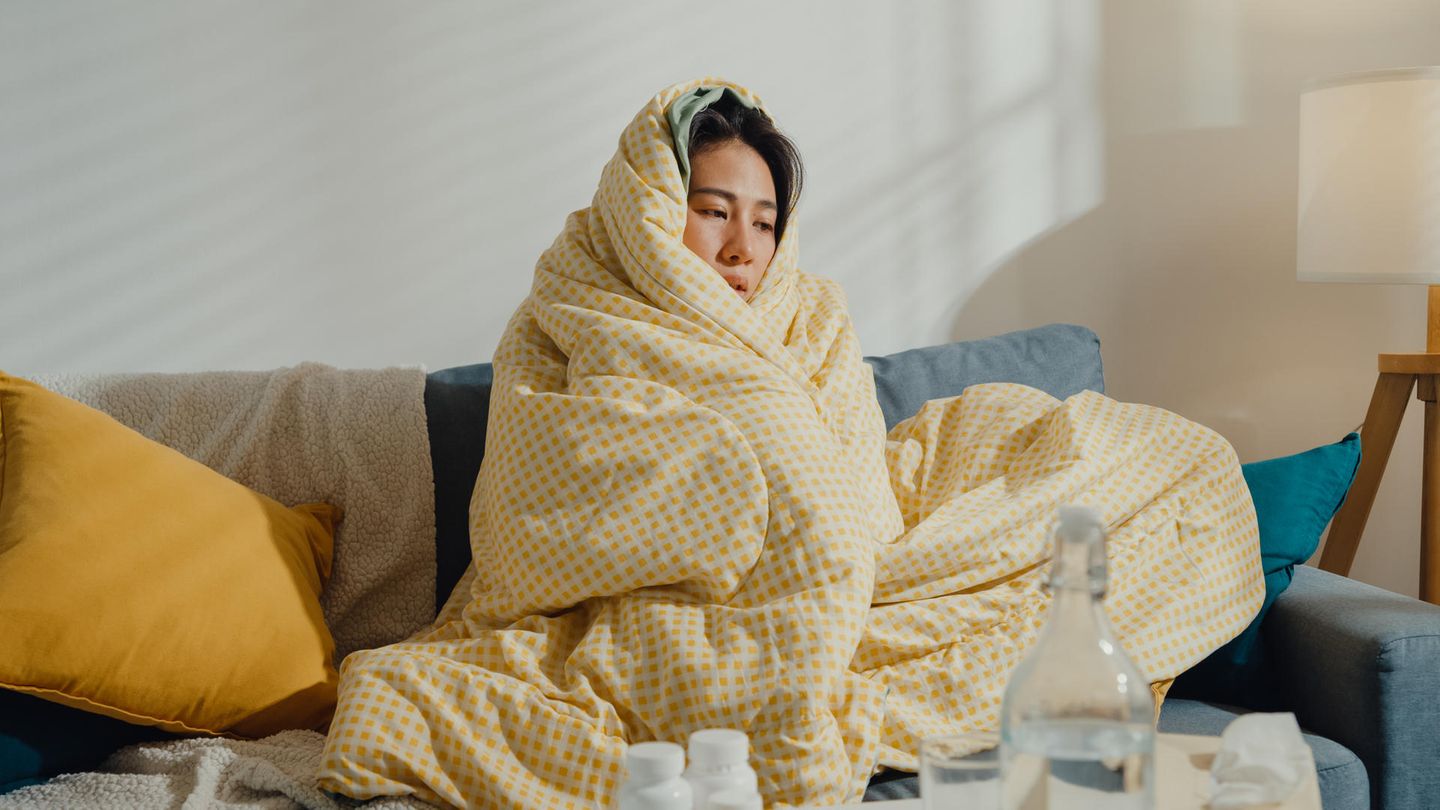Corona is back: Waves of infection are to be expected for various pathogens in the next few months. What to do? Ten questions and answers about the start of the virus season.
1. Are we threatened with a new Corona wave soon?
Overall, the number of acute respiratory diseases is already well above the average of previous years at almost ten million. According to the current report from the Robert Koch Institute, Sars-CoV-2 occurred in around 17 percent of the positive samples examined. 27 percent can be traced back to one of the more than a hundred known rhinoviruses, typical cold pathogens. Influenza does not play a role yet, as its season usually only begins around the turn of the year. Based on the experience of recent years, a new Corona wave is to be expected in the fall and winter. Because so many factors come into play, it is impossible to predict how severe this next wave will be, neither for Corona nor for the flu.
2. Who should get vaccinated against Corona?
The recommendations of the Standing Vaccination Commission (Stiko) apply. Accordingly, at least everyone over the age of 18 (including pregnant women) should have at least basic immunity. This is achieved by at least one vaccination and two further vaccinations or recovering from infections. Children aged six months and over and adolescents should be vaccinated if they have a risky underlying disease. A booster vaccination is generally recommended for everyone who is exposed to an increased risk of infection due to work or family circumstances or who comes into contact with people who are particularly at risk. This includes everyone aged 60 and over. Younger people without any particular risk, on the other hand, do not need a booster. Of course, cases of doubt should be clarified with personal medical advice.
3. When is the best time to get a booster against Covid-19?
Autumn is suitable because the immune system needs one to two weeks to build up the immunity tailored to the virus. The first vaccines for this season are already available after the responsible Paul Ehrlich Institute has checked and approved the batches. Currently this is the mRNA vaccine from Pfizer/Biontech (“Comirnaty”). Later in the fall, a protein-based vaccine from Novavax (“Nuvaxovid”) will be added as an alternative. The protection provided by the vaccination decreases over time and varies from person to person. But the effect is never completely lost and lasts at least through the winter.
4. Are the current Covid-19 vaccines already adapted to new virus variants?
The vaccines now available target a variant called “JN.1”. These and almost all variants in circulation since November 2021 belong to the ever-developing “Omicron” family. This may be confusing, but it has the advantage that although the virus mutates, completely surprising properties have not emerged so far. That’s why even older vaccines are by no means useless. It still makes sense to follow the development of the virus in order to generate a genetically suitable and therefore most effective immune response. JN.1 has also produced other descendants with strange abbreviations that are currently gaining momentum in this country: KP.3.1.1, for example, or XEC. But the current vaccines also protect against severe cases of Covid-19 with these sub-variants. And as a recently published study from Japan shows, our immune system is so flexible that it can adapt to the latest variants even with booster vaccinations with an “outdated” vaccine.
5. Does the vaccination now also protect against infection?
No. Studies show that the risk of infection is reduced by vaccination. However, with current vaccination procedures, too few local antibodies are produced precisely where infection usually occurs – in the mucous membranes of the respiratory tract. This could be improved if vaccines were available as nasal sprays. Then antibody production would be stimulated locally and lead to significantly higher concentrations than before. However, one of the current vaccines would still have to be injected so that immunity can be built up throughout the entire organism.
6. Is there any prospect of new vaccines that provide better protection?
More than 20 nasal sprays are already in development and show good effectiveness in initial tests, but mainly in animal experiments. Other vaccine concepts aim to use not just a single virus protein as an antigen (currently: the well-known docking protein “Spike”), but several. The immune response to the vaccination could be more like that of a natural infection, in which the immune system has to deal with the entire virus and therefore reacts more broadly. It would be ideal to develop a universal vaccine against all variants of Sars-CoV-2 and, if possible, other coronaviruses. This could probably even prevent a new corona pandemic with a currently unknown but related virus.
7. Can the vaccination against Corona be combined with the vaccination against flu?
Yes, this is possible, although the vaccinations should be given in different limbs. Attempts are currently being made to develop combination vaccines that will then protect against the current corona variants and at the same time against the respective strains of influenza (flu). The mRNA technology, in which a box can be filled with many different immune stimuli at the same time, is particularly suitable for this and has already brought initial success. Moderna, for example, recently reported good protection against both Sars-CoV-2 and three influenza strains. The application for approval in the USA is being prepared. Positive news also came from competitor Pfizer/Biontech, which is also working on a combination vaccine. However, the data from a larger study still showed problems with the influenza B virus.
8. As a precaution, should children also be vaccinated against the flu?
In children, severe or even critical cases only very rarely occur. That is why Stiko currently recommends an influenza vaccination only for children and adolescents with a higher risk due to a previous illness. Vaccinations are then possible from the age of six months. For this group, an immunizing nasal spray is also available as an alternative to the syringe. However, a flu vaccination for all children is not recommended in any EU country because the medical benefits are considered to be too low.
9. What other pathogens are also in season in the colder months?
There are whole hosts of different respiratory pathogens that can cause us problems, especially in autumn and winter. Because when it gets cold and wet, we move closer together. The likelihood of infection increases accordingly. How hard it hits you often depends on how sick you already are. In any case, the spectrum ranges from annoying colds to life-threatening pneumonia or even complex diseases such as Covid-19 with possible long-term consequences (“Long Covid”). One of the most important autumn-winter pathogens is the “respiratory syncytial virus” (RSV or RS virus). This germ is also particularly dangerous for the weakest: infants, the elderly and all people with serious previous illnesses of the respiratory organs.
10. Is there also a vaccination against the RS virus?
Two vaccines (“Abrysvo” and “Arexvy”) were approved for the EU last year. The Stiko therefore recommends that everyone aged 75 and over, but also everyone aged 60 and over who has serious previous illnesses or who lives in care facilities, get a one-time vaccination against RSV. Abrysvo’s European approval also applies to pregnant women to protect children from birth to six months of age. The newborns, whose own immune system still has to “learn”, receive antibodies from the vaccinated mother via the placenta (“nest protection”). Because this vaccination is still new and the data is sparse, Stiko does not yet recommend this vaccination for pregnant women. Instead, newborns and infants up to six months of age should be protected with an antibody (“Nirsevimab”, trade name “Beyfortus”) via an injection into the thigh in good time before their first RSV season (October to March).
Source: Stern
I’m Caroline, a journalist and author for 24 Hours Worlds. I specialize in health-related news and stories, bringing real-world impact to readers across the globe. With my experience in journalism and writing in both print and online formats, I strive to provide reliable information that resonates with audiences from all walks of life.




